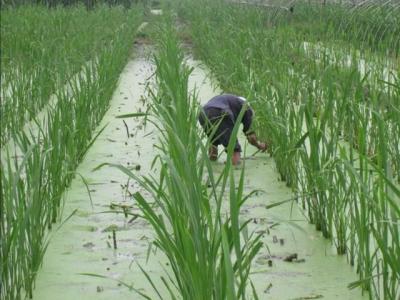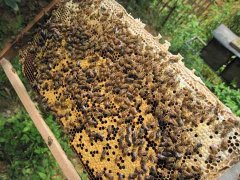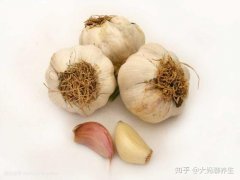Cultivation techniques of Zizania caduciflora: changes in growth characteristics and how to fertilize Zizania caduciflora
According to the characteristics, the growth and development of Zizania latifolia shoots can be divided into four stages. How do you apply fertilizer to Zizania latifolia?
1. Germination period: When the temperature rises in spring, tiller buds and ramets begin to germinate and form new plants one after another. Generally, upper buds germinate earlier than lower buds, and their growth potential is more vigorous.
2. Tillering stage: When a new plant grows up to have 5 leaves, tiller buds can occur in its basal leaf axils. Each new plant can produce about 10~20 new tiller buds, among which the early tiller buds can become expanded tender shoots, called effective tillers.
3. Pregnant period: that is, the base of the stem began to expand the period.
4. Dormancy period: When the temperature drops below 150C, the growth of the aboveground part stops, and at this time, tiller buds and ramets formed by new plants sprouting underground stems are formed on the shortened stems, both of which are dormant in the soil.
Formation of Zizania latifolia
When the bud formed, Ustilago mycelium invaded, and the mycelium distributed in the whole tissue. Mycelia maintain growth with host nutrients and expand to form a cavity; hyphae secrete plant hormones, induce abnormal cambium, promote cell division, cause abnormal cell hypertrophy and form Zizania latifolia shoots, and then Ustilago sp. produces chlamydospores. The results showed that the content of auxin IAA in the stems of flowering plants was 3~4 times less than that in the stems of pregnant plants.

Recommended amount and method of fertilization for Zizania latifolia shoots
(i) Recommended amount of three elements (kg/ha): single-season rice (red shell species): nitrogen 100-150. Phosphoric anhydride: 80-100. Potassium oxide: 50-100.
(ii) Recommended amount of compost: 15-20 tonnes/ha.
(iii) Fertilization period and method (kg/ha)
1. Basal fertilizer: before preparation, the full amount of compost and calcium superphosphate 400 kg (containing 72 kg of phosphoric anhydride), after comprehensive sowing, ploughing into the soil, fully mixed with the soil.
2. One chase (10-15 days after planting): apply 35-55 kg urea (containing about 15-23 kg nitrogen) and 50-100 kg potassium chloride (containing 30-60 kg potassium oxide).
3. Second dressing (20-25 days after planting): 55-85 kg urea (containing about 25-38 kg nitrogen) and 110-140 kg calcium superphosphate (containing 20-25 kg phosphoric anhydride).
4. 3. Zhizhui (Zizania latifolia shoots with flattened and plump pseudostems): 55-85 kg urea (containing about 25-38 kg nitrogen) and 33-66 kg potassium chloride (containing 20-40 kg potassium oxide).
5. Four toppings (autumn harvest period): 85-125 kg urea (nitrogen content of about 36-53 kg).
- Prev

Beekeeping and beekeeping techniques, what are the insect pests of bees?
Bee breeding should also pay attention to the harm of insect pests. The pests of honeybees include bees, bee lice flies and wax moths that harm the wax of the nest. The enemies of bees include toads, spiders, tiger-headed bees and so on. Let's take a look at it. Toads: toads are mostly in summer
- Next

Garlic efficacy: the efficacy and function of garlic, what are the benefits of eating garlic?
Garlic is a seasoning vegetable that we often use to enhance its flavor. whether it is fried green vegetables, braised fish or stewed chicken soup, garlic is a nutritious and delicious ingredient, while Western-style steak and spaghetti are often served with garlic. You can see garlic in both the East and the West.
Related
- A one-day flower show brings 130 million yuan in orders! Nanhai, this Phalaenopsis exhibition is amazing
- What do the flower language and meaning of Lutheran tree mean? Precautions for planting Lutheran tree
- Encounter Chaoshan Kongfu tea, not without this cup of Phoenix single clump
- The durian market in Vietnam and Thailand is flooded. The price of imported durian has plummeted by 30-40% in a month.
- Shanghai solved the problem of local vegetable supply by planting 80,000 mu of green leafy vegetables.
- Wageningen University has become the best agricultural university in the world for the seventh time in a row.
- The strongest export season of South African grapes is full of challenges, with exports to Russia falling sharply by 21%.
- Sri Lanka is on the verge of bankruptcy, "Tea for debt" Organic Agriculture Revolution aggravates the Food crisis?
- Turning waste into earthworm manure and worm manure into organic fertilizer-A new choice for auxiliary farming
- Organic rice growers shoulder the responsibility of nurturing agricultural talents! Yinchuan Sustainable Farm with Organic Life Camp

